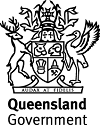Published Monday, 09 July, 2007 at 04:08 PM

Minister for Natural Resources and Water and Minister Assisting the Premier in North Queensland
The Honourable Craig Wallace
QUEENSLAND TREE CLEARING DOWN BY 27%
Queensland continues to lead the nation in reducing greenhouse gas emissions, with new figures showing tree clearing throughout the State is down by 27%.
Natural Resources and Water Minister Craig Wallace said the Statewide Landcover and Trees Study (SLATS) showed the statewide average annual rate for clearing of woody vegetation in 2004/05 was 351,000 hectares.
This is 27% lower than in 2003/04 (482,000 ha) and 54% lower than the peak measured clearing rate in 1999/2000 (758,000 ha).
Reductions in clearing of more environmentally significant remnant woody vegetation are even greater – 35%, down from 267,000 ha in 2003/04 to 172,000 ha in 2004/05.
The 2004/05 clearing reductions equate to savings of 8.8 million tonnes of greenhouse gases.
The reduction of tree clearing in Queensland is the single most important factor in the Howard Government meeting its Kyoto greenhouse gas reduction targets – although John Howard has contributed nothing to this achievement.
“Queensland has put the bad old days of the bulldozer and the chain behind it,” Mr Wallace said.
“Instead, this State can now be proud of its leading role in reducing greenhouse emissions,” he said.
“I give due credit to Queensland landholders who are complying with the vegetation management laws.
“Landholders now are beginning to reap the benefits of retaining rather than destroying vegetation.
“They are finding new income through preserving parts of their property to provide vegetation offsets to greenhouse gas producers.”
Queensland recorded an environmental achievement of world significance late last year when the Beattie Government ended broadscale clearing of native vegetation.
This followed a phase-out period which began in 2003.
Before that up to 500,000 hectares of native vegetation was being cleared annually, with a peak of up to 758,000 ha in 1999/2000.
The end of broadscale clearing in Queensland will lead to a cut in greenhouse gas emissions by an estimated 20 million tonnes each year.
Queensland has 84 million hectares of woodland and forests.
The SLATS project, which releases figures two years in arrears, uses world-class satellite remote-sensing technology.
Given Queensland’s size (1.7 million sq kms), satellite image data is the only practical method of monitoring land cover change.
Computer-based methodologies have been developed which accurately depict vegetation composition and changes in land cover.
SLATS woody vegetation monitoring technology is recognised as being the most comprehensive in Australia.
The technology is now being used by the NSW Government to assist them with its vegetation management activities.
Other 2004/05 SLATS points of interest are:
·The remnant wood vegetation clearing rate in 2004-05 is the lowest ever. It is 66% lower than the peak clearing rate of 1999-2000 (505,000 ha).
·For 2004-2005, 43 per cent of clearing was on leasehold land and 55 per cent was on freehold land.
·Remnant woody vegetation amounted to 49% of woody vegetation clearing, down from 67% in 1995-2000, indicating less environmentally sensitive remnant vegetation is being cleared.
·Clearing for pasture remains the main reason for most woody vegetation clearing in 2004-05, making up 94%.
·The Brigalow Belt was the region that had the highest woody vegetation clearing rate in 2004-05 followed by the Mulga Lands followed by South East Queensland.
Media inquiries: Paul Childs, Craig Wallace’s office, on 0407 131 654.

